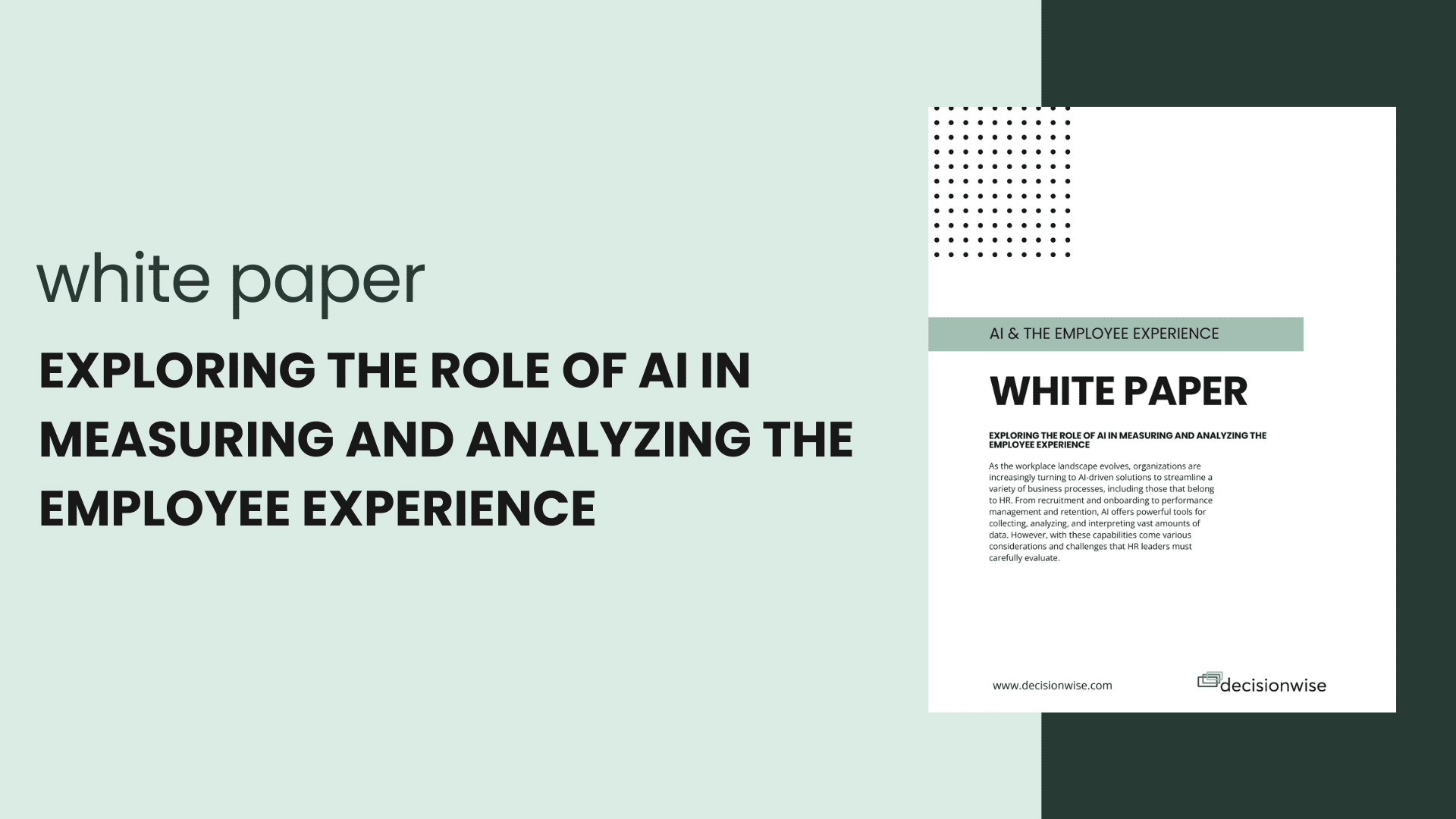Heraclitus, an ancient Greek philosopher, is credited with first observing that “change is the only constant in life.” This maxim is certainly true when it comes to predicting employee experience trends in 2023. Everything feels chaotic, and as of this writing, here is a brief sample of some current headlines:
- Amazon to cut more than 18,000 jobs (WSJ)
- Salesforce to cut about 10% of its Staff (CNN)
- Layoffs are sweeping Corporate America to kick off 2023 (Yahoo Finance)
Yet it seems like just yesterday we were fretting over the “great resignation.” Last week, your favorite coffee place closed early because they couldn’t find enough help. Now, it seems as though everyone’s jobs are in jeopardy.
This commotion leads us to our most important employee experience prediction for 2023: The power dynamic is shifting in favor of the employer. This means that our original predictions of work-life balance, workload & stress, and even retention will not play out as expected.
Is it Work-Life Balance or Life-Work Balance?
Originally, work-life balance was going to be a key experience trend for 2023. Employees were starting to rewrite the rules around work and were even beginning to talk about the concept of life-work balance. The Wall Street Journal reported, “Your Coworkers Are Less Ambitious; Bosses Adjust to the New Order.”
Certainly, employees have more options than ever, and the great resignation is evidence for this dynamic. But, with recessionary pressures still lingering and mounting layoffs, who is really in the driver’s seat for 2023? Our updated prediction is that employers will continue to care about balance for their employees, and hybrid work will increase in popularity, but do not plan on seeing the acronym LWB (life-work balance) go mainstream anytime soon.
Workload and Stress
The unpleasant secret behind corporate layoffs is that while they are allegedly about cost savings, they are often used to “right size” the organization. The skeptical view is that management has simply been waiting for an opportunity to cull the workforce. We are not sure how much of this is going on, but when there is a reduction in force (RIF) across industries and segments, we know there are two likely outcomes.
First, extra work will be pushed onto those the stay. This is an obvious reality, signifying a downward trend in workload and stress scores. This is also a concern because the Pareto Principle applies to employees as well. Top performers tend to carry a larger share of the workload.
In 2023, we need to carefully listen to our key employees and be strategic about our retention efforts.
Retention
Second, as a result of all these RIFs, employees who were considering a possible jump will likely stay put. The rationale? Maintaining seniority where you are is preferable to being the newest employee at a company that may be facing layoffs in the near future.
Hence, our employee experience prediction for 2023 regarding retention is that scores will improve. Not necessarily because organizations are giving employees a compelling reason to stay, but because of the heavy influence of external market forces.
DEI + B
Together with a commitment to Diversity, Equity, and Inclusion (DEI), there has been a recent trend in discussing belonging (B). We applaud this addition because it helps leaders and organizations see beyond simply meeting quotas and allows them to focus on outcomes. A key outcome of DEI efforts should be an increased feeling of belonging, not just a restructured organization chart or statistics in the annual report highlighting gains in certain demographics.
DecisionWise’s research is unequivocal. The single most important driver of employee engagement is this statement: I feel like I belong here.
Compensation
Inflation is being felt across all socioeconomic divides. Everything simply costs more. Due to this, along with compensation gains made during the Great Recession, compensation has jumped for most employees.
Because wages had been historically stagnant, these increases were needed. The remaining concern, however, is that inflation is still outpacing wage gains.

So, if this trend continues, our prediction is that labor organizations and employees will fight for increased compensation. In fact, the minimum wage was just raised in California for 2023.
Conclusion and Honorable Mention (WFH Will Look More Like Hybrid Work)
As previously noted, the most major shift anticipated in 2023 is that employers will begin to flex their muscles more. While work-from-home (WFH) will continue to be a viable option for many organizations, we anticipate more employers implementing restrictions governing how much time employees must spend in the office.
We predict a shift away from WFH to hybrid plans where employees are required to be in the office for two or three days a week. For those that are completely remote, we expect to see employers asking that those employees come into the office more regularly for meetings and other connection-building events.
Employee engagement scores were the highest during the pandemic when leadership was focused on better communication and connecting on a more personal level (employees saw their CEOs in jeans and their children and dogs were present in the background).
However, for 2023, we expect employee engagement levels to move in a slightly downward trajectory. With the talk of a recession and corresponding layoffs, the separation between management and the rank and file is growing. This will ultimately lead to lower levels of employee engagement for the year.
Who really knows what the employee experience will look like in 2023? Employees may have to give up some “gains,” but certainly not all of them. One thing we can say for sure: we will not be returning to the 1950s when employees were referred to as “resources” instead of human beings.



